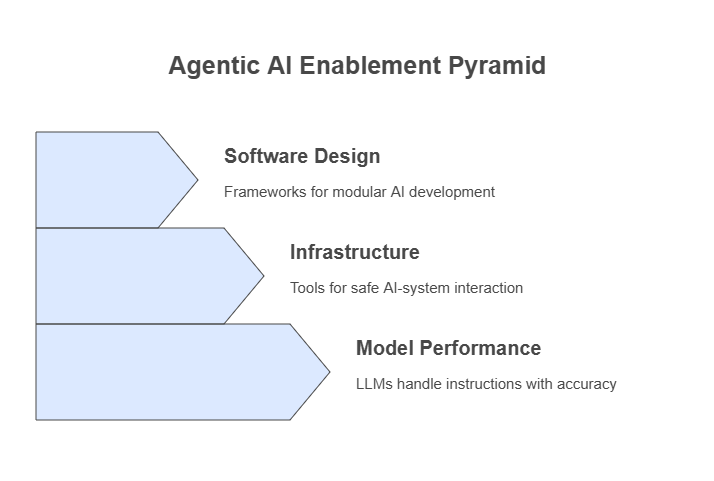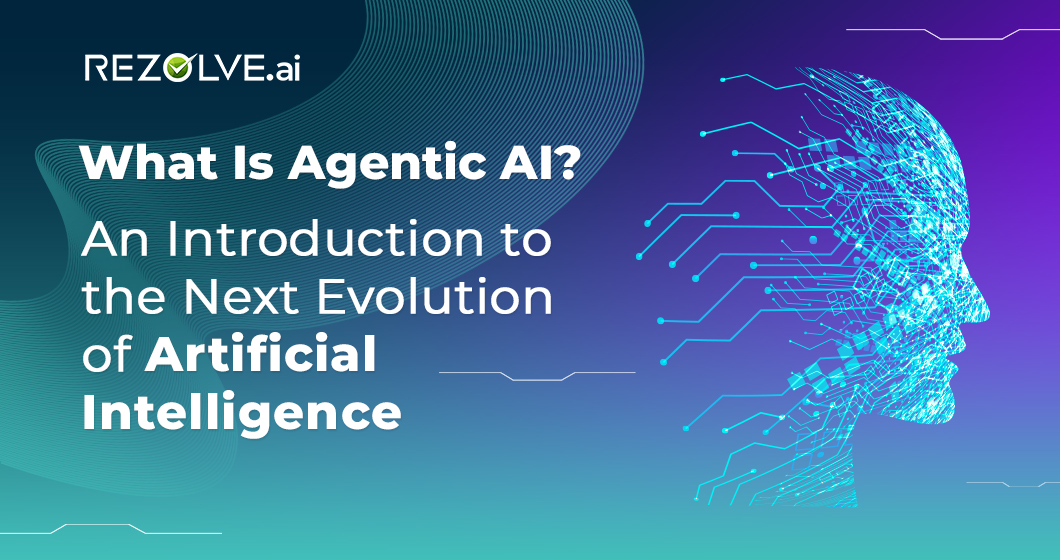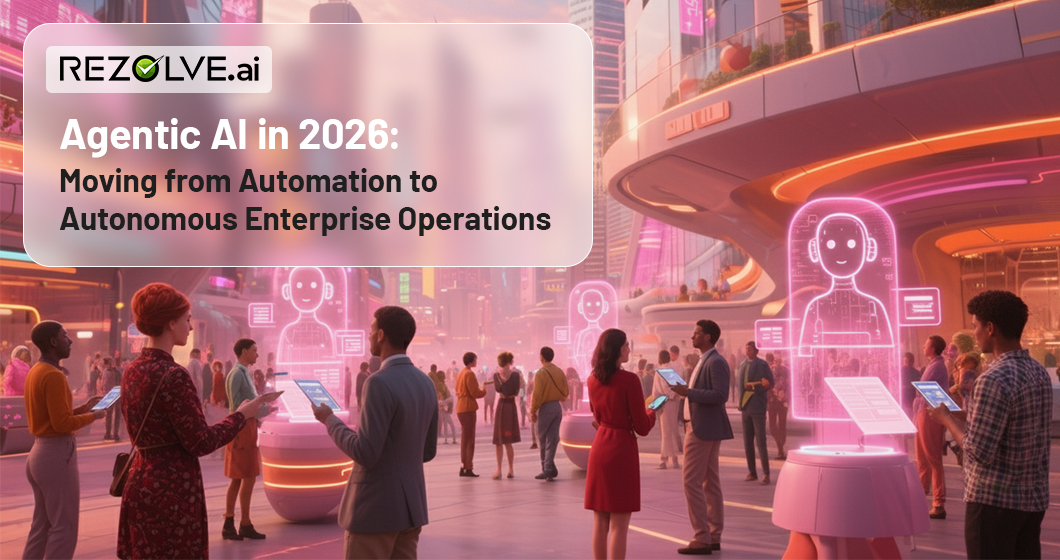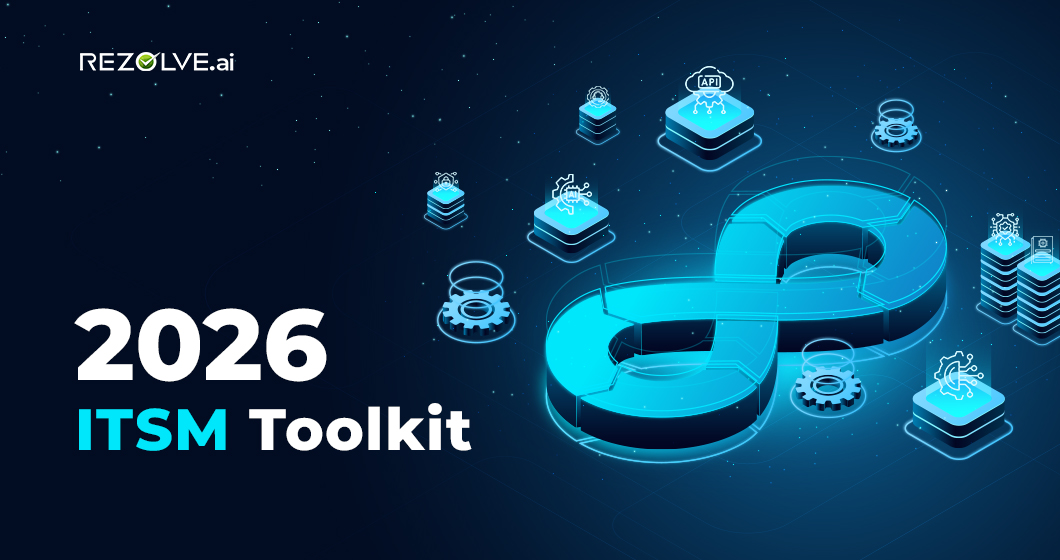We are now used to AI bots that answer questions, finish our sentences, summarize documents, and even write code. But once the task is done, so is the AI. The bot waits for the next prompt from the user and remains static until then. This is how modern GenAI systems work as we are seeing for a little over 2 years now.
Generative AI bots are powerful, but static. They don’t make decisions or plans. They can ‘generate’ the required response in textual/visual/audio format – but cannot act autonomously.
Now, a new model is emerging to fill this gap - Agentic AI. And it’s not just a tweak to the interface, or a faster version of the same old architecture. It’s a different way of thinking about what AI does. Rather than being a passive tool, agentic systems are designed to act, pursue goals, and respond to results along the way. They are active participants in process execution, not just assistant bots waiting for the next instruction.
This article breaks down the idea of Agentic AI and its impact on the knowledge work clearly. So let us get going!
From Prompt-Response to Goal-Driven Action
Today’s AI models, especially Large Language Models (LLMs), feel intelligent. Ask them to generate a report or translate a paragraph, and they do it instantly. But beneath the surface, they follow a very simple structure - an input goes in, and an output is presented. That’s it!
Agentic AI flips this pattern. Instead of responding to prompts, these systems accept objectives. They figure out what steps are needed to reach those objectives, carry those steps out one by one, and adjust if things don’t go as expected.
What Exactly Is Agentic AI?
Agentic AI refers to AI systems that behave like software agents: they take goals, form plans, interact with tools, evaluate progress, and keep going without needing a human to guide each step. They don’t just generate; they operate.
Agentic AI is literally an AI bot with ‘agency’ to act within the defined rules. Agentic bots can make if/else/or decisions intuitively, and act autonomously within the limits to carry out a task without human involvement for most decisions.
The aim of agentic AI technology is to replicate goal-driven initiatives involving multiple procedural steps and simple decisions. Remember that it is not trying to mimic general intelligence or full autonomy. Only what is procedural and involved relevant decisions.
What Makes an AI System “Agentic”?
Agentic behavior relies on the structure of components working together. Here’s what typically makes it tick:
First, there’s a goal interpreter. The system needs to understand what the user wants in a way that can be operationalized. For instance, a command like “Summarize this folder” might involve reading files, extracting themes, and deciding what’s relevant.
Next, there’s a planner. The agent needs to map out a sequence of steps. Not everything needs to be known upfront because plans can change. But some structure helps avoid chaos.
Then comes tool access. Agentic systems don’t work in isolation based on their generative capabilities alone. They interact with APIs, IT environments, documents, browsers, and internal functions. That’s how they actually get things done.
Memory plays a critical role too. Without it, agents can’t track what’s already completed, which actions succeeded, or which tasks failed and need retrying. Some memory is temporary (just for the current task); some can be longer-term.
Finally, there’s the feedback loop. After each action, the agent evaluates what happened. Did the tool return an error? Was the result useful? Should the next step change? This self-checking behavior is what gives agentic systems resilience.
What Agentic AI Is Not?
It’s important to make a few things clear, especially with how often AI terminology gets misunderstood. Agentic AI is not a robot with consciousness. It doesn’t have feelings, and it isn’t “alive” in any sense. Moreover, it is not a fully autonomous system that can do everything. Most agentic systems are designed to complete well-defined tasks, not operate freely across any domain beyond their defined scope. For instance, you can have a single agentic AI or a team of them configured and fine-tuned especially for ITSM and HR.
Also, agentic AI systems are adaptive, not rule-based. They don’t follow a rigid script but reason through goals in real-time.
Example of GenAI vs. Agentic AI
.png)
Suppose you want to generate a weekly report based on customer support tickets. Here’s how that might look with a standard AI tool (GenAI) versus an agentic one.
With standard AI:
· You paste each ticket into a prompt.
· You ask for a summary by typing in
· You copy the summaries into a document.
· You format the report yourself.
With agentic AI:
· You give the agent access to the ticket folder and say, “Create a report.”
· It opens the files, processes them in batches, extracts relevant themes, groups issues by category, and assembles a summary.
· If something fails, say a file can’t be read, it flags the issue or tries a workaround.
· Once complete, it outputs a ready-to-review document.
In the second version, you’re just supervising the output and not managing every step. That’s the difference.
Where Agentic AI Is Already Being Used?
While still early in its evolution, agentic AI is already being deployed in areas where multi-step tasks are frequent, repetitive, and time-consuming. For instance, Rezolve.ai’s Agentic SideKick 3.0 is an agentic AI framework comprising 7 specialist agentic bots. This agentic framework is purpose-built for ITSM and HR automation across enterprises. But there are many other applications of agentic AI.
Another example is internal research. Teams are starting to use agentic systems to scan public databases, monitor competitor updates, and assemble reports without needing to prompt the system every time.
In software engineering, agents are being developed that can write, test, and revise code not just based on a single instruction, but as part of an iterative development loop for speed and efficiency. This is also known as ‘vibe coding.’
Another example is customer service teams experimenting with agents that can open tickets, find relevant knowledge base content, draft responses, and follow up. These systems save hours of manual effort as already seen by Rezolve.ai customers.
Even in fields like finance, legal ops, and HR, agents are being trained to collect data, evaluate criteria, flag anomalies, and assemble documents, all with minimal input beyond the initial task description.
How is Agentic AI Possible Now?

It is fair to ask why is agentic AI even possible now, when it wasn’t five years ago?
The answer lies in three core domains - model performance, infrastructure, and software design - which have improved massively.
Large language models have reached a level where they can handle instructions, plan steps, and generate structured outputs with surprising accuracy. They are still improving in every aspect but have evolved fast enough to be deployed as major employee support, IT, and customer-facing applications for enterprises. Moreover, infrastructure tools like vector databases, API orchestration layers, and secure sandbox environments have matured enough to let AI interact safely with external systems.
And perhaps most importantly, developers have started to build agent-oriented frameworks. These are systems like LangChain, AutoGen, CrewAI, and others that provide memory, reasoning loops, and tool interfaces in a modular, reusable way.
In a nutshell, this means you no longer need a research lab to build an agentic AI bot. While building a really good one will take up a lot of resources and infra, it is still no longer an arena reserved only for the tech-elites.
Limitations and Risks of Agentic AI
Like every piece of technology, agentic AI is not a silver bullet. It comes with limitations and using it well requires clear thinking. One such risk is reliability. A multi-step agent can fail in unpredictable ways. Maybe it loops indefinitely, maybe it misinterprets a goal. Maybe it takes the wrong action on an external tool. That’s why guardrails, observability, and human feedback are important. This is also why a Human-in-the-Loop (HITL) layer is crucial for agentic systems.
Security is another concern. Any system that takes action must be restricted to safe environments. You don’t want an agent deleting records or making external API calls without permission. This is exactly why Rezolve.ai has a dedicated agentic bot trained for securing confidential data during end-user interactions in MS Teams and Slack.
Task drift is also real. Agents sometimes lose the plot, especially on long, open-ended assignments. You asked for a report, and 20 steps later it’s generating charts no one asked for. Scoping and evaluation checkpoints help keep things on track.
And finally, there’s the question of quality. Just because an agent finishes a task doesn’t mean it did it well. Evaluation metrics and feedback loops must be part of the design. Clearly, the agentic system required heavy fine-tuning to get it to run effectively for a given scope of tasks.
What is the Future of Agentic AI Technology?
Agentic AI represents a shift in how we build enterprise IT and connected application systems. The move from passive AI to goal-driven AI mirrors the way software itself evolved from scripts, to services, to full-stack applications. Eventually, we will likely stop thinking of “using AI” as writing prompts and start thinking of it as managing agents. And, this is already happening.
New age software tools will have embedded intelligence that operates on goals, tracks its own state, and reports back when tasks are done. Likewise, workflows will become agent-led because AI will handle repetitive work - coordination, formatting, verification, summarization, etc.
In time, every team might have an internal ecosystem of agents, just like Rezolve.ai’s customers have for IT & HR. And the organizations that implement them thoughtfully will see real gains in productivity and responsiveness.
Closing Note
Agentic AI represents a quiet but meaningful leap forward. If implemented right, agentic systems help people get more done with less overhead. They take on repeatable, multi-step tasks and reduce the need for hand-holding while working alongside humans.
There’s still plenty to figure out - how to govern them, keep them stable, and train teams to use them well. But the future of this tech has already been unveiled. We’re moving toward AI that is extremely effective and productive for business functions that seem tedious today.

.png)



.webp)




.jpg)

.png)








.png)